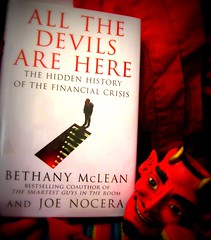Frisco, TX (PRWEB) February 23, 2014
Asset Panda, LLC, a developer of asset management and tracking computer software primarily based in Frisco, TX, today announced a new milestone in asset tracking, to a lot more than $ two.2 billion in total assets tracked.
Asset Panda is the easiest mobile technique far more intuitive to track and handle your assets. Pandas active program uses mobile scanning applications integrated barcode. This indicates that any person with a mobile phone may possibly conduct audits or gear research in the field and you do not require to buy pricey scanners dedicated bar code.
Asset Panda can retailer data in types such as bar codes, videos, pictures, recipes and rental and warranty. These information are stored and managed in the cloud, where it is protected and accessible via any web browser and mobile devices, no matter exactly where users are.
stocks of assets being monitored with panda assets consist of all sorts of fixed assets, such as tools, gear, components, telephones, computer systems and other computer sources, furnishings office leases, stocks, art, collectibles and individual home.
Asset Panda is generally employed for spreadsheets utilized to replace or sustain stocks of assets, or in addition to monetary / accounting systems that have the capacity to handle assets and restricted comply with-up.
are some common examples of use cases where users benefit from genuine pandas special tracking capabilities
???????? Tools for field repairs
???? Oil and gas extraction equipment and services
???? Machinery and construction tools
???? Transportable Healthcare Gear
???? Audiovisual gear
???? Analytical testing equipment and machines
???? Tablets and laptops
Asset Panda is a method of inventory, it offers comprehensive life cycle management of the assets of your organization. Asset Panda manages, organizes, supervises and monitors all transactions and activities that take place throughout the life of an asset, which includes repairs and sales and billing.
benefitsAsset pandas to the following customers:
???????? Easy item entry, recording, reporting and verification
???? Keep all important information about an asset in a single place
???? Access anytime, anywhere mobile or internet
???? The rapid deployment price
???? Eliminates the want for a separate device code bars
???? Backup data securely (Amazon Cloud)
Typically, customers active pandas can save 1-three % of their total asset value of the assets Panda. For instance, for a business of ten,000 assets and $ 750 average. worth of assets ($ 7.5 million total asset worth), they can save much more than $ 100K/yr implementation of active Panda. You can calculate your savings from active pandas return on investment calculator https://www.assetpanda.com/web page/roi this link.
Asset Panda provides a simple way to solve their largest dilemma tracking and management of details assets they hold organizations. A lot more details is available in the active pandas http://www.assetpanda.com internet site.
clear = “all” audit Press Service







